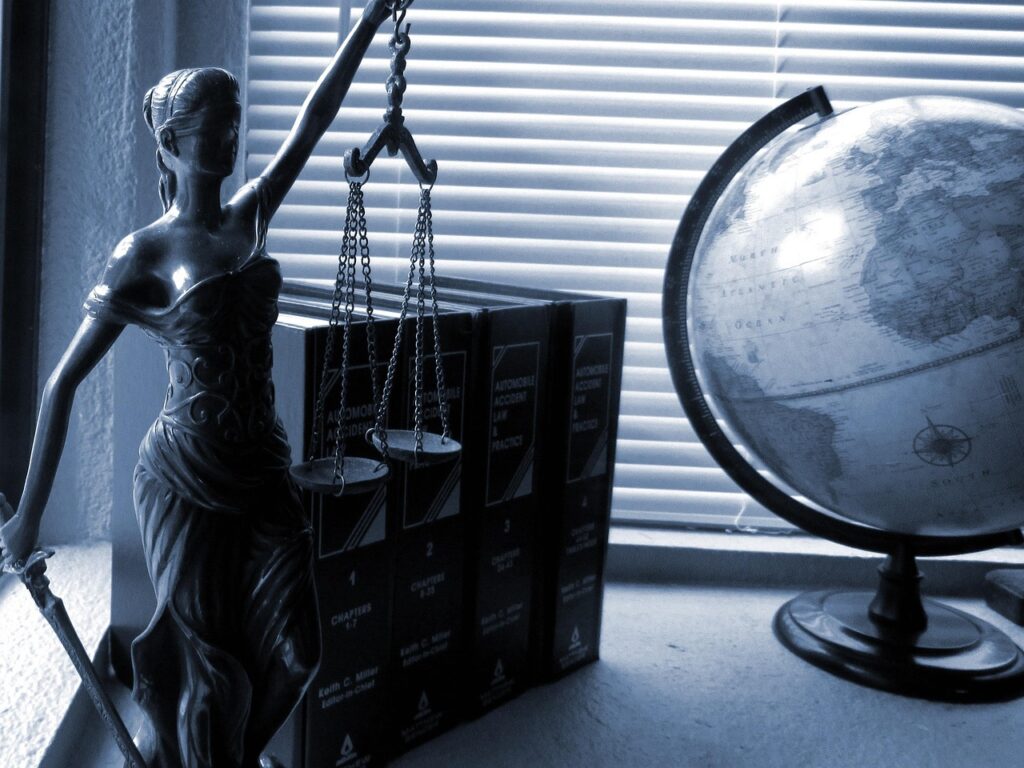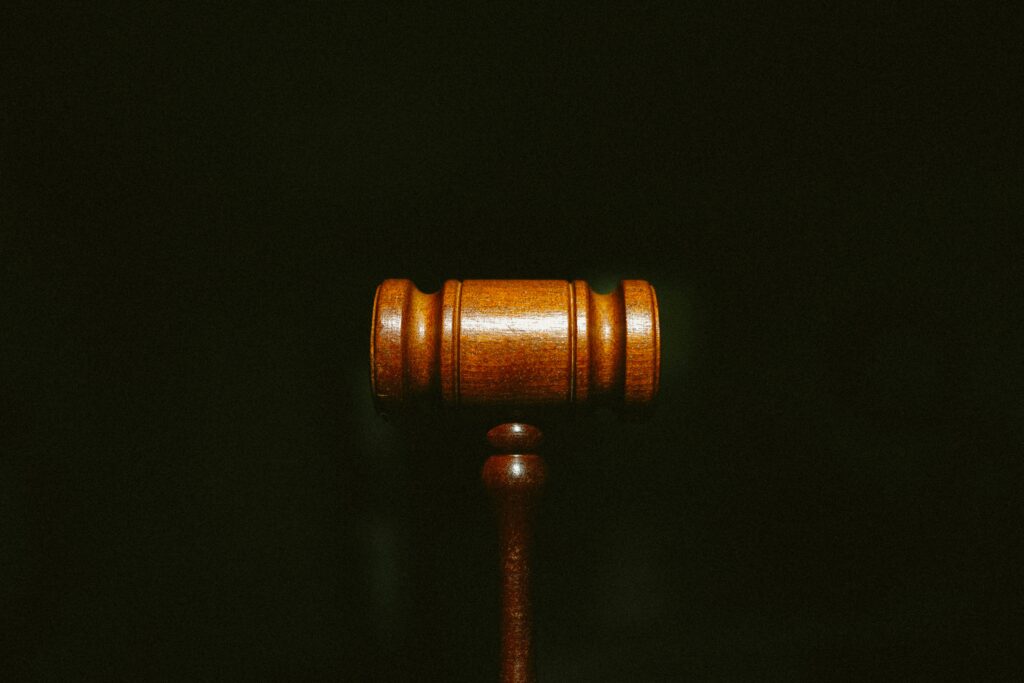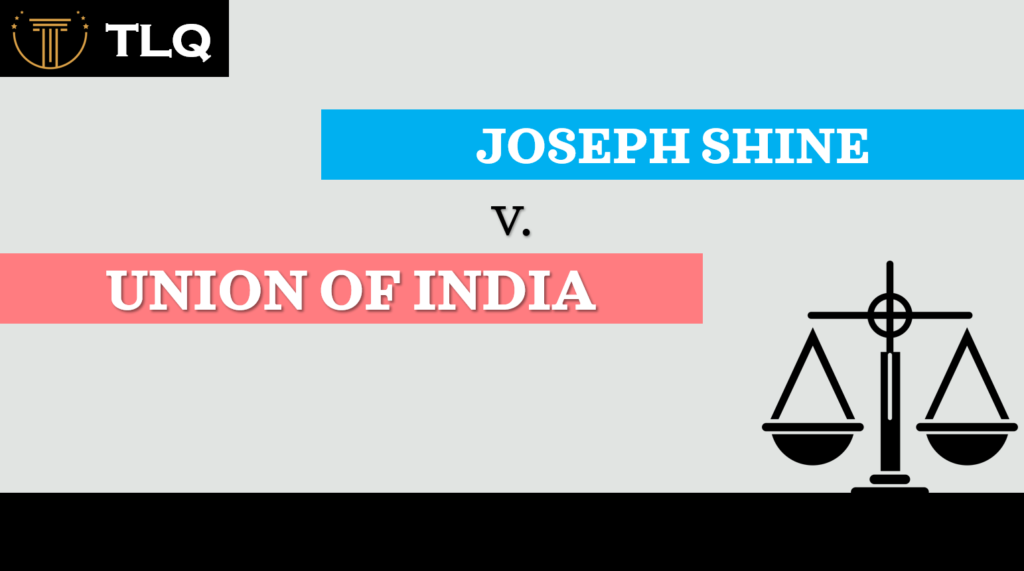Published On: 9th September, 2024
FACTS
Two women, “Shaheen Dhada and Rinu Srinivasan” were arrested under Section 66A of the IT Act, 2000[1], alleged to have posted objectionable comments on the social networking site Facebook regarding complete shutdowns in Mumbai after the demise of Bal Thackeray, the founder of Shiv Sena Party. The police released them shortly, but the arrest was condemned across the country. Many activists claimed that the officers had “abused their power by invoking Section 66A of the IT Act, 2000[2], and curtailed the fundamental right to freedom of speech and expression guaranteed under Article 19(1)(a) of the Indian Constitution”[3]. The offense defined by Section 66A of the IT Act[4] falls under the scope of cognizable offenses, which allows police officers to detain and interrogate a suspect even without a warrant. Consequently, many people were arrested by policemen around the country for sharing any viewpoint that the government considered being “obnoxious material,” but it was largely debating political beliefs.
The Union Government 2013 suggested a provision for the detention of a person issued under Article 66A of the IT Act[5]. According to the Central authority’s guidelines, nobody can be arrested by any police without the permission of a senior official whose position is no less than an Inspector General of Police. Consequently, people from all over the country filed petitions to quash the unconstitutional provisions of the IT Act. “The Supreme Court of India then combined the petitions into a single Public Interest Litigation, which is now known as Shreya Singhal v. UOI[6].”
The petitioner filed a public interest writ petition under “Article 32 of the Indian Constitution[7], requesting the Supreme Court to declare Sections 66A, 69A, and 79 of the IT Act[8] ultra-vires to the Indian Constitution. The petition claimed that the terminologies like Menacing, offensive, irritation, discomfort, obstruction, danger, and insult of these laws are broad and vague and can” be exploited. Hence, these laws fall beyond the scope of Articles 14, 19(1)(a), and 21 of the Indian Constitution[9].
Moreover, the distinction drawn between netizens and citizens of the nation was deemed arbitrary and in violation of Articles, 14&19(1)(a) of the Indian Constitution[10] as the distinction allows police personnel the right to detain netizens for statements that may also be expressed by ordinary people of the country.
ISSUES
- Whether Section 66A of the Information Technology Act constitutionally valid or not?
- Whether Section 69A and the Rules unconstitutional?
- Whether Section 79(3)(b) and Information Technology “Intermediary Guidelines” Rules, 2011 constitutionally valid or not?
- Whether Section 118(d) of the Kerala Police Act is valid or not?
RULE
The divisional bench of the Supreme Court upheld the individual’s “right to freedom of speech and expression, as guaranteed by Article 19(1)(a) of the Indian Constitution”[11], and restrained the executive from unreasonable use of authority. It has also provided the legislature with explicit rules for enacting legislation that doesn’t infringe freedom of speech and expression, with certain justifiable constraints. It was further ruled that the ambiguous wording of article 66 A might lead to arbitrariness, causing unjust to society, hence it has to be abrogated. Apart from section 66A, the Supreme Court of India also knocked down “Section 118(d) of the KPA[12].” Additionally, the court distinguished between “Hate Speech” and “Free Speech.” Hate speech is inherently subjective. Any unintentional remark cannot be categorized as hate speech. The court pointed to three essential principles in the concept of free speech: discussion, advocacy, and incitement. When a speech reaches a point of incitement to offense, a restriction on freedom is imposed. The court, on the other hand, rejected the petitioner’s argument that there was no discernible difference between print and live speech when contrasted to speech via the internet. In comparison to traditional forms of information transmission, the internet provides a forum for individuals to voice their opinions and within a few seconds, information may reach millions of people. Thus, the petitioner’s argument that challenged the violation of Article 14 of the Constitution[13] failed.
As far as Section 69A and IT (Procedure and Safeguards for Interception, Monitoring, and Decryption of Information) Rules, 2009[14] are concerned, they were held intra-vires to the Constitution of India. And lastly, the validity of Section 79[15] was upheld as it is under the interpretation of Section 79(3)(b) of the IT Act[16].” Hence, only Section 66-A, which conflicted with Part III of the Constitution, was deemed unconstitutional by the Supreme Court, using the doctrine of severability and the remaining sections were upheld.
ANALYSIS
- SECTION 66-A QUESTIONABLE PROVISION
The terminology provided in Section 66A of the IT Act[17] is considered unclear and imprecise. It is difficult to make a specific accusation against an accused under this clause since it is ambiguous. The executive authority also cannot comprehend the rationale for bifurcating a specific word or statement covered by this clause. Furthermore, the author believes that what is obnoxious to one person may not be exact for another, thus rendering the rule constitutionally ambiguous.
In India’s legal system, legislation with uncertainties in its practical interpretation is considered void. In the case of “Kartar Singh v. the State of Punjab”[18], it was held that an act must be declared unlawful if it has unclear qualities in its prohibitory interpretation. As a result, our jurisprudence system’s core theory says that a rule that controls individuals in the community should offer a “reasonable and rational notice of whether their behavior is unlawful or lawful”.
- DOCTRINE OF SEVERABILITY
“The doctrine of severability comes into play when the court is dissatisfied with the constitutionality of a statute. The author thinks that the respondent’s justification is vague and unreasonable as it does not specify what part of Section 66A can be saved. Section 66A of the IT Act of 2000[19] is written in a way that makes it easy for authorities to misinterpret it. It contains an arbitrary restriction on “freedom of speech and expression” that violates Article 19(2) of the Indian Constitution[20]. Any existing legislation that conflicts with Part III of the Indian Constitution is solely null and void, according to Article 13(1) of the Constitution[21].”
- VIOLATION OF ARTICLE 14
The petitioner in the present case stated that vague, illogical, or discriminatory acts violate Article 14 of the Indian Constitution, resulting in a disproportionate interpretation of the rules. Furthermore, the petitioner claimed that section 66A of the IT Act does not meet the requirements of the twin test. The difference between the public broadcast of messages via live speech and the internet is incomprehensible. As a result, creating a new class of criminals based on it is arbitrary. It was also confirmed that Section 66A of the IT Act punishes offenders with a maximum” punishment of three years of prison, in contrast to the maximum sentence for defamation, which is two years. Furthermore, defamation is a non-cognizable offense, but an offense under Section 66 is cognizable.
However, the petitioner’s argument since there is a discernible difference between the public broadcast of words via live speech and the internet. The transmission of obnoxious words through the internet is more cost-effective and time-consuming” than live speaking. As a result, such communications reach many people in a short period, increasing the risk of public disruption. Thus, according to the author, the affirmation of the petitioner regarding article 14 does not stand logical.
- “REVOCATION OF SECTION 118(D) OF THE KERALA POLICE ACT”
Section 118(d) of the KPA[22] was also challenged before the Supreme Court, in addition to Section 66A of the IT Act[23]. This provision establishes the crime of infuriating another person by transmitting comments or messages via any means of communication. The petitioner claimed that the provisions of Section 118(d) of the KPA[24] are comparable to Section 66A of the”IT Act[25]. As a result, it was argued that it was outside the scope of the reasonable classifications set out in Article 19(2) of the Indian Constitution[26] and, therefore, a violation of Article 19(1). (a). As a result, the Supreme Court recognized its unconstitutionality and declared it ultra-vires to the same degree as Section 66A of the IT act.
- “CONSTITUTIONALITY OF SECTION 69A AND 79(3)(B) OF IT ACT”
According to “Section 69A of the IT Act, a webpage can only be blocked after following a plethora of procedural guidelines and rules, including referring to the initiator and intermediary. After then, the Authorized Officer can either shut down the site following the 2009 Rules or when the Honorable Court of Law permits the Officer to do so. However, there is no mention of the” intermediary’s duty to restrict specific material from the digital domain under Section 69A, read the 2009 Rules. The only ground for this is when the intermediaries fail to prohibit explicit content in response to a court order promptly. This is the sole factor specified in Section “79(3)(b) of the IT Act[27]. If not, it will be tough for intermediaries such as Instagram, Yahoo, and others to abide by the orders when numerous requests are pending. The intermediary is then required to verify which requests are rational and which are not.”
It should be emphasized that the court’s instruction or order must be per the subject matter outlined in Article 19(2) of the Indian Constitution[28]. Thus, In the current case, the author conceives that the prohibited omissions or acts stipulated beyond Article 19(2) do not fall within the ambit of Section 79 and thus need not be abrogated.”
CONCLUSION
After critically analyzing the facts and judgment of the following case, the author concluded that in a generation where the majority of the citizens utilize the Internet as a means of communication to share their opinions, the Supreme Court’s two-judge bench has delivered a significant stride toward safeguarding “freedom of Speech and Expression”. By ruling “Section 66A of IT Act” unlawful, the court emphasized the need for discussion and advocacy on an issue to aid in the determination of the rationality of public policies and laws enacted.
Further “Section 66A of the IT Act of 2000” is frequently misunderstood and misapplied. “The legal system of every democratic country places a high value on freedom of speech and expression.” Our country should not be one of a kind where democracy exists but is not practiced and where the citizens are reluctant or afraid to voice their thoughts and ideas. I agree that defamation and sedition are exceptions to “freedom of speech and expression”, and this is rational. However, in the present case, the women had no intention of committing any of the listed offenses under section 66A but rather had questioned the cause for the Mumbai shutdown via a Facebook comment which is completely justified.
Freedom of speech and expression is crucial for our country’s growth and progress, and its absence would negate democracy’s genuine meaning. As a result, the author believes that the Supreme Court’s decision to rule in Shreya Singhal’s favor was a wise one.”
Reference(s):
[1] Shreya Singhal vs. Union of India, AIR 2015 SC 1523.”
[2] Information Technology Act, 2000, § 66A (India).”
[3] Art.19, Part III of the Constitution of India,1950.
[4] Part III of the Constitution of India,1950.
[5] Supra Note 2.
[6] Supra Note 1.
[7]Art.32, Part III of the Constitution of India,1950.
[8] Information Technology Act, 2000, § 66A, 69A, 79 (India).
[9] Art.14, 19(1)(a),21, Part III of the Constitution of India,1950.
[10] Art.14, 19(1)(a), Part III of the Constitution of India,1950.
[11] Supra Note 3.
[12] The Kerala Police Act, 2011, § 118(d) (India).
[13] Art.14, Part III of the Constitution of India,1950.
[14] Information Technology Act, 2009, § 69, rule 4, (India).
[15] Information Technology Act, 2000, § 79 (India).
[16] Information Technology Act, 2000, § 79(3)(b) (India).
[17] Supra Note 3.
[18] Kartar Singh vs the State of Punjab, 1961 AIR 1787, 1962 SCR (2) 395
[19] Supra Note 3.”
[20] Supra Note 3.”
[21] Art.13(1), Part III of the Constitution of India,1950.
“[26] Art.19(2), Part III of the Constitution of India,1950.”



